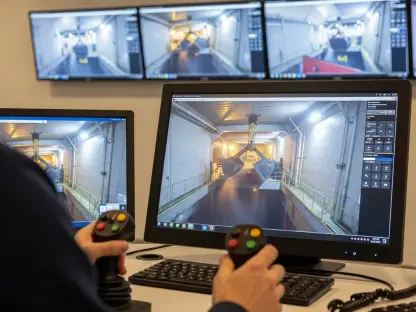I’m thrilled to sit down with Vladislav Zaimov, a seasoned telecommunications specialist with deep expertise in enterprise telecom solutions and risk management of vulnerable networks. With a keen understanding of the Indian telecom landscape, Vladislav offers invaluable insights into the ongoing transformation of state-run enterprises like BSNL. In this interview, we dive into BSNL’s ambitious network expansion, their significant capital expenditure plans, the role of key partnerships, and the challenges and opportunities ahead as they strive to compete with private giants and prepare for future technologies.
How has BSNL been working to expand its network coverage recently, and what scale of investment has gone into these efforts?
BSNL has made remarkable strides in expanding its network, particularly with the rollout of 4G services. Over the past year, they’ve deployed around 100,000 towers to deliver 4G connectivity across India. This massive undertaking came with a record-breaking capital expenditure of approximately INR 250 billion, which stands as their highest annual investment to date. This push reflects a strong commitment to bridging the digital divide and enhancing service quality for millions of users.
What can you tell us about the new capital expenditure plan lined up for BSNL and its intended impact?
The Department of Telecommunications has announced a substantial allocation of nearly INR 470 billion for BSNL’s next phase of growth. This fresh funding aims to further strengthen their network infrastructure, improve coverage, and elevate service quality. The goal is to position BSNL as a more competitive player in the market by expanding their reach and ensuring they can meet the growing demand for reliable connectivity, especially in underserved regions.
Who are the key partners involved in BSNL’s 4G rollout, and how have they contributed to the project?
BSNL has collaborated with some major players for their 4G expansion. The bulk of the project was awarded to Tata Consultancy Services (TCS) and a consortium led by the Center for Development of Telematics (C-DoT). TCS has played a pivotal role in managing the deployment, while C-DoT developed the core 4G technology. Other partners like Tejas Networks and ITI Ltd. have also been instrumental in supplying equipment and supporting the infrastructure, including a long-term maintenance contract to ensure sustainability.
What are the growth ambitions set for BSNL by the Union Telecom Minister, and how do they plan to achieve these targets?
The Union Telecom Minister, Jyotiraditya Scindia, has set some bold targets for BSNL. They’re aiming to grow their mobile subscriber base by 50% within the next year, alongside boosting enterprise revenues by 25–30% and fixed-line revenues by 15–20%. These goals hinge on improving customer satisfaction, expanding network coverage, and tailoring services to meet diverse user needs, particularly in the enterprise and fixed-line segments where there’s significant growth potential.
How does BSNL’s financial performance, particularly in terms of ARPU, compare to its private competitors, and what challenges does this create?
BSNL’s average revenue per user, or ARPU, currently ranges from INR 40 to 175, depending on the region, which is notably lower than private competitors like Reliance Jio and Bharti Airtel, who report ARPUs of INR 208 and INR 250, respectively. This gap highlights a critical challenge for BSNL—they need to enhance service offerings and customer value to increase revenue per user while competing with rivals who have deeper pockets and more advanced infrastructure. It’s a tough balancing act between affordability and profitability.
What strategies is BSNL exploring to improve its ARPU and grow its customer base?
To boost ARPU, the Telecom Minister has emphasized the importance of customer satisfaction and acquiring new subscribers. BSNL is focusing on delivering better service quality, offering competitive plans, and possibly introducing value-added services to increase user spending. On the customer growth front, they’re working to enhance user experience through network reliability and targeted marketing to attract and retain subscribers, especially in areas where private players dominate.
Looking ahead, what are BSNL’s plans for further 4G expansion and their eventual transition to 5G technology?
BSNL is not slowing down—they’ve got plans to deploy another 100,000 4G towers across the country to further solidify their network footprint. As for 5G, the strategy is cautious yet forward-looking. They’re prioritizing the stabilization of their 4G network and ensuring quality of service before making the leap to 5G. The transition is seen as manageable once the current infrastructure meets the desired standards, which shows a pragmatic approach to adopting next-gen technology.
What is your forecast for BSNL’s role in the Indian telecom market over the next few years?
I believe BSNL has the potential to carve out a stronger position in the Indian telecom market, especially if they leverage this significant capex and focus on customer-centric improvements. With government backing and a clear push for network expansion, they could become a vital player in connecting rural and underserved areas, where private operators often hesitate to invest. However, closing the ARPU gap and keeping pace with technological advancements like 5G will be crucial. I foresee BSNL evolving into a more competitive force, provided they maintain momentum and adapt swiftly to market dynamics.









